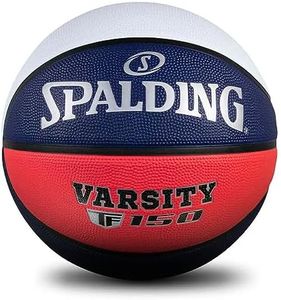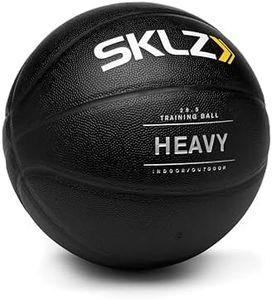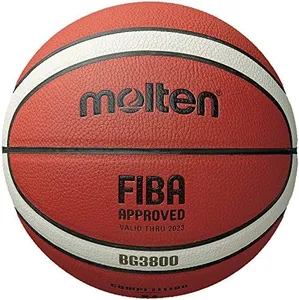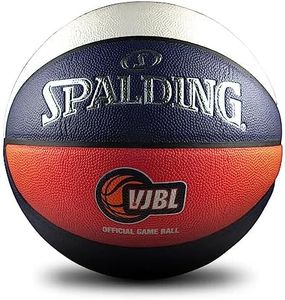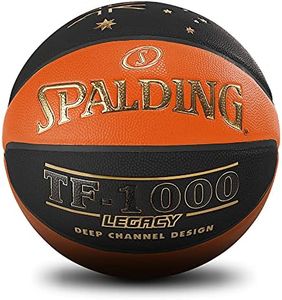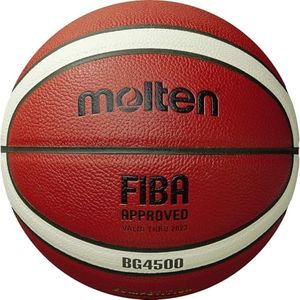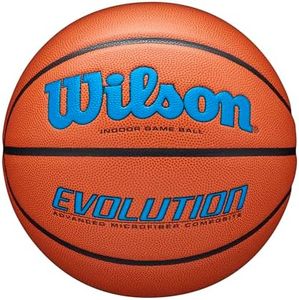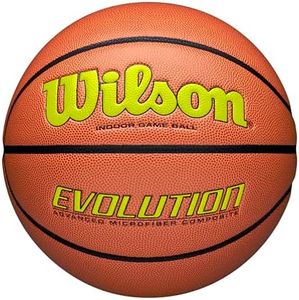We Use CookiesWe use cookies to enhance the security, performance,
functionality and for analytical and promotional activities. By continuing to browse this site you
are agreeing to our privacy policy
10 Best Basketball Balls
From leading brands and best sellers available on the web.Buying Guide for the Best Basketball Balls
Choosing the right basketball can make a big difference in how you play and enjoy the game, whether you’re practicing at home, playing pickup games, or competing in organized leagues. When selecting a basketball, it’s important to consider where you’ll be using it, how often you’ll play, and what feels best in your hands. Understanding the key features will help you pick a ball that’s comfortable, durable, and suited to your needs.MaterialThe material of a basketball refers to what the outer covering is made from. It’s important because it affects the ball’s grip, durability, and how it feels when you play. Basketballs are usually made of leather, composite (synthetic) leather, or rubber. Leather balls are top-notch for indoor play as they become softer and offer great grip over time, but they wear out quickly outdoors. Composite balls work well both indoors and outdoors and are a good middle ground, offering decent grip and feel with better durability outside. Rubber balls are the most rugged choice, great for outdoor courts and playgrounds, and are very tough but may feel less pleasant and be a bit slippery indoors. Choose the material based on where you’ll play most often: if mostly outside, go with rubber or composite; for mainly indoor use, leather or composite is best.
SizeBasketballs come in different sizes, and this matters for comfort, control, and official play. The standard sizes are 7 (29.5 inches in circumference) for men, 6 (28.5 inches) for women and teenagers, and 5 (27.5 inches) for children under 12. Using the right size helps with ball control and learning proper skills. If you’re an adult male or playing in men’s leagues, size 7 is best; women and teenage boys usually go for size 6, and younger kids should use size 5 to build confidence and technique with a ball that fits their hands.
Grip and TextureGrip refers to how easily you can hold and control the basketball, largely impacted by the ball’s texture. A ball with deeper grooves and more pebbled texture is typically easier to grip, especially if your hands get sweaty or if you play outdoors. Balls with a smoother surface can be slippery and harder to handle. Your grip preference often depends on your style of play and hand size. If you like dribbling and handling, prioritize deeper channels and a pronounced texture for more control.
Bounce ConsistencyBounce consistency means how evenly and predictably the ball comes back up when it hits the ground. This is important because a ball that bounces unevenly or loses air quickly can throw off your game. Premium balls tend to have better air retention and smoother, more predictable bounce, while cheaper balls might feel flat or erratic. Test the ball if possible: bounce it a few times to see if it comes back up straight and steady. This is especially key for players focused on dribbling, shooting, or skill development.
DurabilityDurability determines how well the basketball will hold up over time and with repeated use. This is mostly a concern with outdoor play, where rough surfaces can wear down a ball quickly. Rubber balls typically last longest outdoors, whereas leather and composite balls can scuff and break down if used on rough courts. If you play mostly outside and want a ball that needs less frequent replacement, prioritize durability over premium feel.

